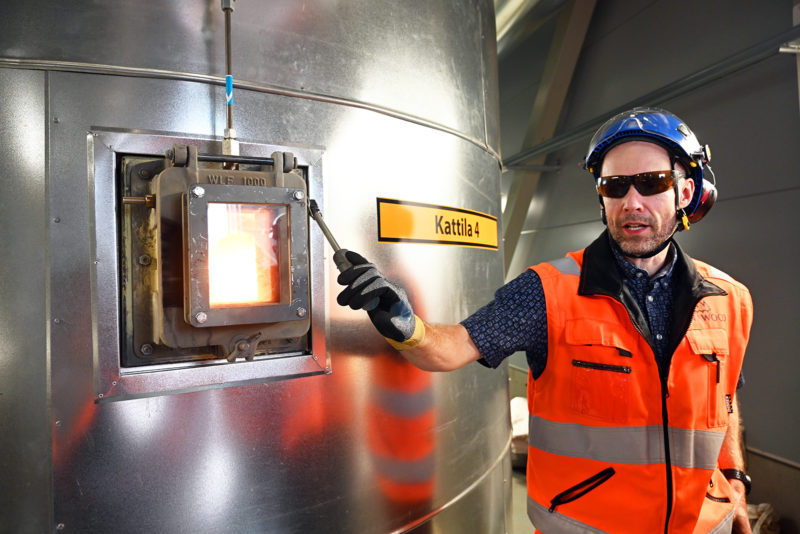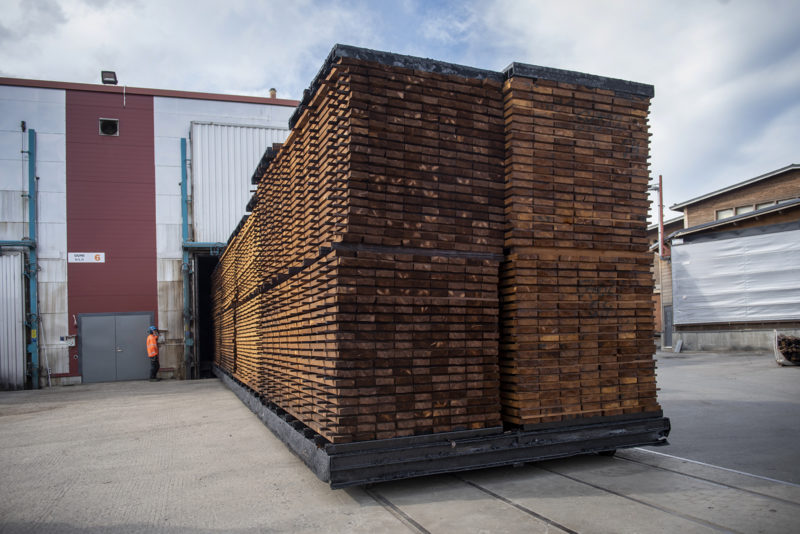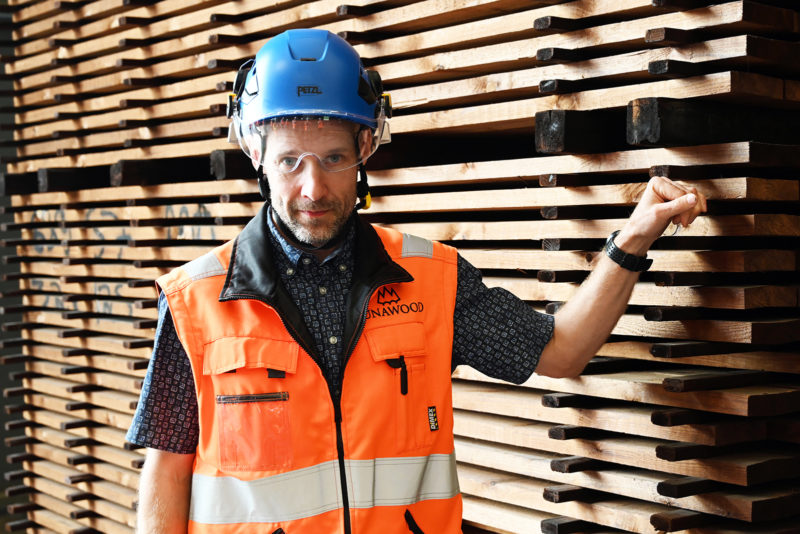Multiplying value of wood by thermal treatment – no chemicals are needed

A three-stage thermal treatment makes sawn timber weatherproof. No chemicals are needed; the wood is simply heated to 200 degrees Celsius.
Wooden patios, fences, jetties and the outer wooden cladding of buildings must be protected against decay. Instead of using chemicals or paint, the protection can be achieved by using a thermal treatment developed in Finland.
Despite the relative simplicity of the process, many details must be taken into account for the treatment to succeed.
The timber used as raw material must be faultless and have a moisture content of about 20%. It must also have a uniform density. If the batch contains timber with varying density, it is impossible to achieve a uniform dryness in the final product.
’This is why we only accept timber that’s mainly from points south of Oulu. We can’t allow any timber from further north, as it’s denser,’ says Petri Lyyra, Director of the Iisalmi mill of the Lunawood company. In addition to its Iisalmi mill in eastern Finland, Luna-wood has a similar mill in Kaskinen on the west coast.

Processing takes 2–3 days
The process begins with the assembly of a batch of timber. Each layer in the batch is separated with laths, and the boards in a layer do not touch each other. This ensures that the hot air will circulate freely in the treatment chamber.
The thickness of the timber processed is 19–63 millimetres and the width 75–200 millimetres.
The batch, contains 50–100 cubic metres of timber, is put into the chamber and the temperature is slowly increased to 190–212 degrees Celsius. The moisture content of the timber drops from 20 to 0%.
This is followed by the thermotreatment, then cooling down and equalizing the moisture content, raising it to 4–7%. This makes the timber less likely to crack.
The entire process takes two to three days, depending on the species and thickness of the timber. The final result is a product with quite a number of advantages over both sawn goods and impregnated wood. The latter, chemically treated to resist decay, is considered by thermowood producers as competitor.

Lunawood’s thermal wood resists decay regardless of weather or climate conditions and is non-toxic. No chemicals are used in manufacturing it. It retains its dimensions and is a better heat insulator than untreated timber, it has an even colour throughout, it requires no maintenance and after use it can be composted or burned to produce bioenergy.
It is made of certified Nordic timber and can be worked in the same way as ordinary timber.
On the other hand, thermowood is expensive. Even impregnated wood is more costly than non-treated sawn timber, and thermowood is 2.5 times as expensive as impregnated wood.
’But we’re dealing with a different product here. Thermowood is chemical-free and more highly processed,’ says Lyyra.
Each batch is checked for quality
The heat treatment method was developed and patented by VTT Technical Research Centre of Finland. It was taken into use at Lunawood by the company’s founders Olavi and Aulis Kärkkäinen in the early 2000s. The t was later sold to capital investors, who have continued to develop both product and production.
Out of each batch that is processed, ten samples are taken for quality checks on moisture content, colour and presence of defects, as well as on shrinkage during the process. The maximum allowable shrinkage is five percent.
If the batch is in order, it can be sent on. Some of the production is packaged by Lunawood and sent on to the market as such, while a certain part is planed to special profiles. Planing is easier than usual because the resin in the timber evaporates during the thermal process.
The most important factor affecting the cost of manufacturing is energy. At Lunawood Iisalmi, the energy used comes from LPG or electricity. The electricity is from renewable sources, and all waste heat is utilized if at all possible. Also, the gases released from the drying timber are burned for energy.

Careful anticipation of risk of fire
The production process is audited every year, as required by the Thermowood certificate developed by the International Thermowood Association. Certificate holders are entitled to use the Thermowood brand. The membership of the International Thermowood Association includes 16 companies from several European countries.
The greatest risk at the mill is an uncontrollable fire. To prepare for this event, the mill personnel is trained in firefighting and the mill has its own fire brigade. There are 24-hour fire patrols, and the mill is equipped with numerous CCTV cameras with smoke detectors. The camera feed is monitored by the control room and the cameras give an alarm if smoke is detected.
The raw material for Lunawood Iisalmi comes from 20–30 sawmills located at a radius of about 230 kilometres.
’At Iisalmi, we mainly use Scots pine, while at our other mill in Kaskinen spruce is more important,’ says Lyyra. No hardwood is used.
Of the production, 90–95% is exported to more than 60 countries. The company’s total production capacity is 160,000 cubic metres per year, of which Iisalmi produces 90,000 cubic metres.
The number of employees is 140, of whom 70 at Iisalmi. The company’s turnover in 2022 was EUR 77 million.